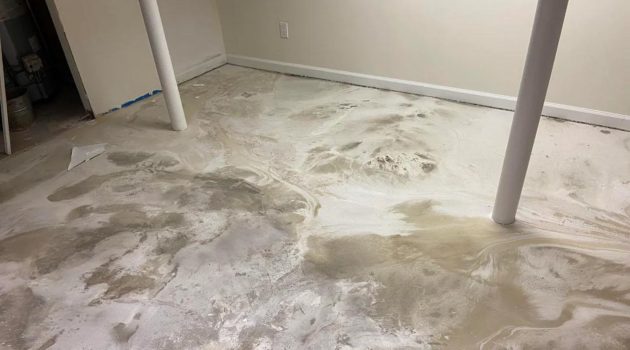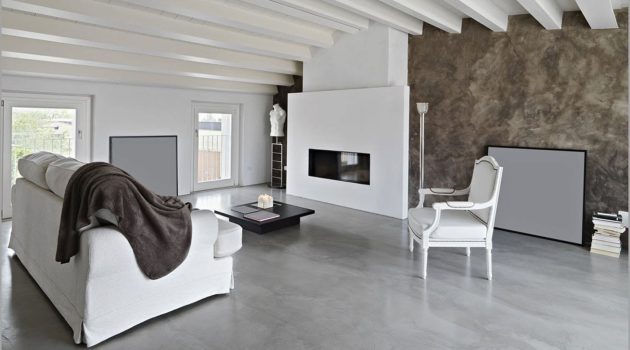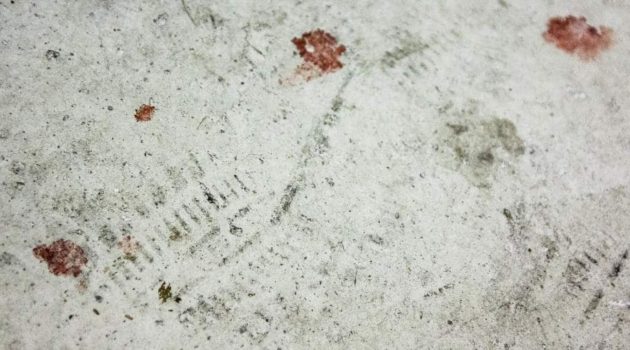Modern interior design often looks sleek and shiny. However, adding rustic elements can give your house a unique charm. Travertine tiles are great materials to create classic Italian look in any room.
Despite travertine tile pros and cons, it has good potentials as a classic, distinctive, and environmentally-friendly material.
Interested in installing travertine tile? Here is what you need to know about this tile.
A. What is Travertine Tile?

Travertine tiles originated from Italy, and the name is related to Tibur River. This is because travertine is formed by mineral sediments that are accumulated over time. The result is a tile surface that looks porous and subtly textured, although it can be polished to get a sleeker look.
Many classic bathhouses, Roman gardens, and even the famous Colosseum in Italy used travertine in their constructions, which contributed to their unique look.
Nowadays, travertine tiles are available for modern bathrooms, living rooms, and kitchens. They come in various sizes, from large floor tiles to small backsplash tiles.
However, the characteristics are still the same. Travertine is porous and light, because there are pockets and holes created by carbon dioxide.
Read also: 22 Types of Flooring: How to Choose One for a Better Home
B. Types of Travertine Tiles
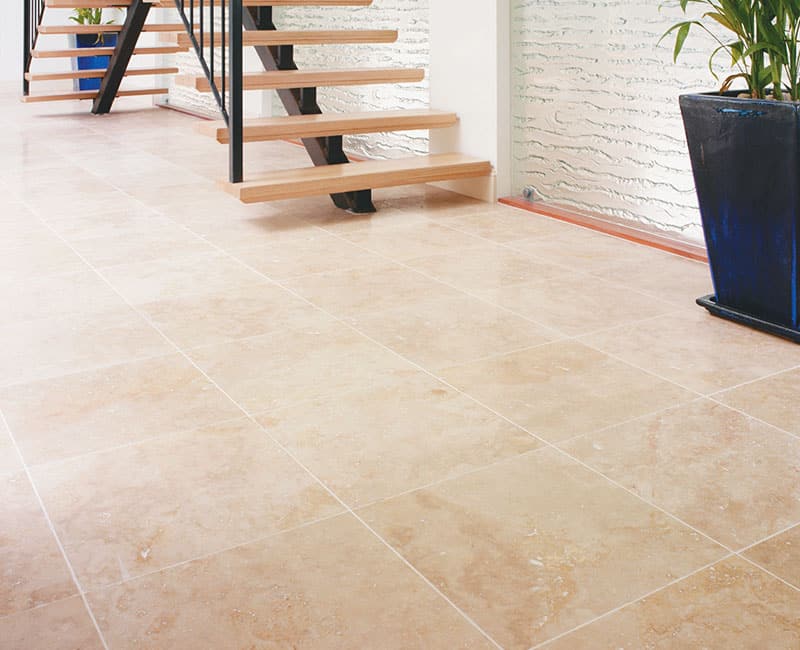
There are four travertine tile types you can find at the market these days. They are:
1. Tumbled Travertine
Tumbled travertine tiles have slightly rounded edges due to the “tumbling” process, in which the stones are processed in a tumbling machine together.
The surface is usually matte, with an antique look that has visible textures. Tumbled travertine floor tile is popular for outdoor areas, such as a patio, garden paths, and pool edge.
2. Polished Travertine
Polished travertine goes through filling, sealing, and polishing steps, which result in a shiny and sleek look. Unlike regular travertine tiles, the polished ones are more water-resistant. However, they become slippery when wet.
3. Honed Travertine
Many people love honed travertine because it combines the best from tumbled and polished types. It has a matte surface and not slippery, but still look polished enough.
4. Brushed Travertine
Brushed travertine got its name from a wire brushing procedure that creates a matte finish. It can have a regular square form or tumbled.
Each of these tile types create a unique look, but their characteristics make them suitable for specific areas. For example, the slippery polished type is perfect as travertine tile backsplash, but not for outdoor use.
Both honed and brushed are perfect for the interior floor, including the bathroom.
C. Pros and Cons of Travertine Tiles
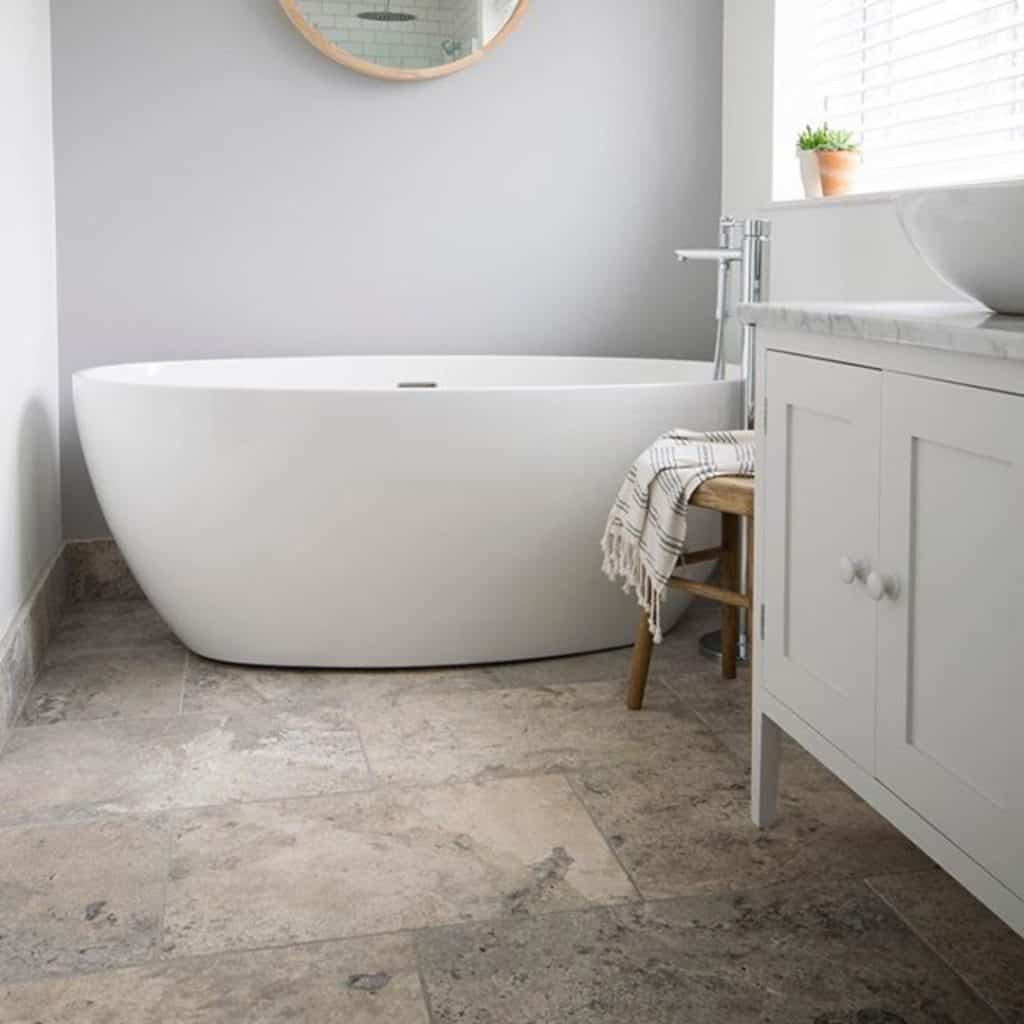
Here are some of the upsides and downsides of travertine tiles:
1. Ageless look
The main attraction of travertine tiles is the ageless, antique look. The polished one may look shiny, but it can lose its luster after several years. However, this does not affect the look, and your tile will get an even more beautiful antique look.
2. Perfect for various design styles
Travertine tiles are suitable for various designs, from classic to traditional and modern. You can use them as the main floor, walls, or accents in the room. You can also choose different tile types to create a specific look.
3. Can handle temperature fluctuations
Travertine does not change temperature easily, so walking barefoot on it is comfortable. It does not feel freezing in the winter, or too hot during the summer.
4. Easy to adjust and fit
Travertine is not exactly smooth, but it is easier to cut than marble, granite, or ceramic, for example. If you have a room with odd corners, curved surfaces, or anything that requires tile adjustments, you can cut travertine tiles more easily.
5. Not durable enough
While travertine is beautiful, it is not what you look for if you want durability. The porous texture is prone to damage, especially if you install the tiles as the floor in a room with high feet traffic.
If you want stronger material, you should pay extra for sealing procedure. This can increase the travertine tile cost significantly.
6. “Limited” tones and shades
Since travertine comes from mineral deposits, its shades are mostly limited to earth tones and colors. They are perfect if you love earthy shades in the design, but maybe a bit restrictive if you like letting your ideas run wild.
7. Requires quick cleanup and regular sealing
The porous texture of travertine quickly absorbs anything that spills onto it. Once you spill juice, milk or oil onto the surface, you must quickly clean it.
You must also apply sealant regularly if your tiles are really porous. Otherwise, etch marks and stain spots will mark your floor, wall, or backsplash.
In short, travertine is perfect for a relatively-dry room with low traffic. However, some travertine tiles are still suitable for shower rooms, dry bathrooms, or kitchen, for example. You only need to choose a tile type that will keep its original condition longer.
D. Tips to Maintain Travertine Tiles

Travertine tiles need regular maintenance to keep their shapes. Here are several maintenance tips you need to follow:
1. Combine different tiles that have similar shades
Limited shades require you to get creative when installing travertine tiles. You can achieve distinguishing effects by combining different tile sizes.
For example, if you want to build a minimalistic travertine tile shower, use smaller tiles for the floor (for extra traction) and bigger tiles for the walls.
2. Seal your tiles properly
If you install travertine tiles yourself, make sure to seal the surface properly. The porous surface requires good sealant to prevent damages.
3. Keep acidic substance from the tiles
If you use travertine tiles as backsplash or kitchen floor, be aware of any acidic substances or spills. Things like orange or lemon juice, and vinegar can leave a permanent stain on the surface (even after you clean it up quickly). Don’t choose cleaning products that have an acidic nature.
Finally, just avoid using these tiles if you have many little kids, cats, or dogs in the house. Travertine is beautiful, but it is not the right tile for a house with high stain risk.
Travertine tiles are beautiful in subtle and earthy ways, and perfect to give classic elements even in a modern house.
Travertine is also environmentally friendly and has unique porous texture, which makes it less slippery and able to handle temperature fluctuations.
However, make sure you consider travertine tile pros and cons, and compare them with your house condition, before deciding to install them.

